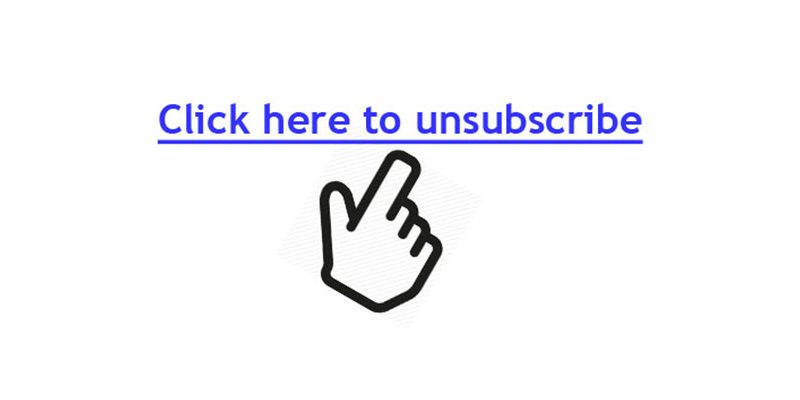3 Reasons Why Someone Will Unsubscribe
Yes, email is still one of online marketing’s most powerful channels, but even a good thing can go bad now and then. Especially if you’re hitting the SEND button way too often, and not considering your subscriber’s experience.
Think about your email inbox. Don’t you sometimes wonder about the companies that send you email after email, even after you’ve stopped opening them, or even worse, marked them as JUNK MAIL?
Bad email marketing isn’t just about spammy “Work from Home” or “Discounts on Prescriptions” subjects lines, and almost incoherent copy riddled with grammatical errors, or no CTA (call to action).
So how do you ensure you’re not motivating your subscribers to click on the “Unsubscribe” link in your emails?
Here are three things you should avoid when sending out email campaigns.
Sending Too Many Emails
Okay, this is harder than it sounds to manage, and a lot of companies are guilty of doing it – even those with big marketing budgets and dedicated staffing. And it’s the reason why inboxes keep filling up with unwanted or too-frequent emails – and from companies you don’t even remember!
Some companies are sending 2 to 3 times a day. Yes, A DAY! Why would anyone think a person would want to hear from a business that often in a single day? Would you?
And I’m not talking about event-specific or time-sensitive reminders, which make sense if you elected to receive notifications.
The point here is to think about your audience and be respectful of their time. Subscribers chose to receive your information, so don’t give them a reason to stop. Sending a couple of emails a week is fine unless it’s a special occasion that calls for an immediate update – such as a correction. But even then, you should keep those to a minimum. Weigh whether or not the correction is of critical importance versus the number of subscribers you might loose.
“Why am I receiving this %*&@?”
One of the most costly mistakes email marketers make is blasting irrelevant content. This situation often arises when a list wasn’t properly segmented, or it was originally segmented from a duplicate master list. Just because someone wants to hear about your latest event, doesn’t mean they want to hear about everything else you have to say, or receive every special offer promotion from an advertiser – especially if the offer doesn’t apply to them.
So how do you find out what they want to receive from you?
You can start by looking at your data – beginning with which emails they open on a frequent basis and which ones they don’t or, worse, have never opened. Most reputable email platforms provide access to a wealth of critical performance data you can use, including gender, age, location, interests and more. And if your platform doesn’t offer this information, you can always just ASK! During a slow campaign week, send out a survey to existing subscribers asking them to pick what type of emails they would like to continue to receive, or even if they don’t want to receive any at all. You might lose a few subscribers, but the ones that stay will be the ones that truly engage with your campaigns, resulting in increased open rates and potentially click-throughs. It requires a little effort, but the payoff can be huge, and your subscribers will be happier too!
Not Mobile-Friendly
Did you know that 53% of all email sent out is now read on a mobile device?
Writing for mobiles devices isn’t like writing for magazines, desktops, or even a website. Add to this the fact that different email clients such as Gmail, Yahoo!, Exchange, etc. can render the same email differently.
The biggest culprits are text too small to read, and links that are too hard to tap on a mobile phone, or you send a single image with no alternative text description, and they have images turned off. It’s just easier for them to click DELETE and move on to the next message.
Most email sending platforms such as MailChimp or Litmus include InBox Preview tools to help you make sure your user has a good experience reading your emails. And here are a few best practices you should consider when creating for the mobile inbox.

